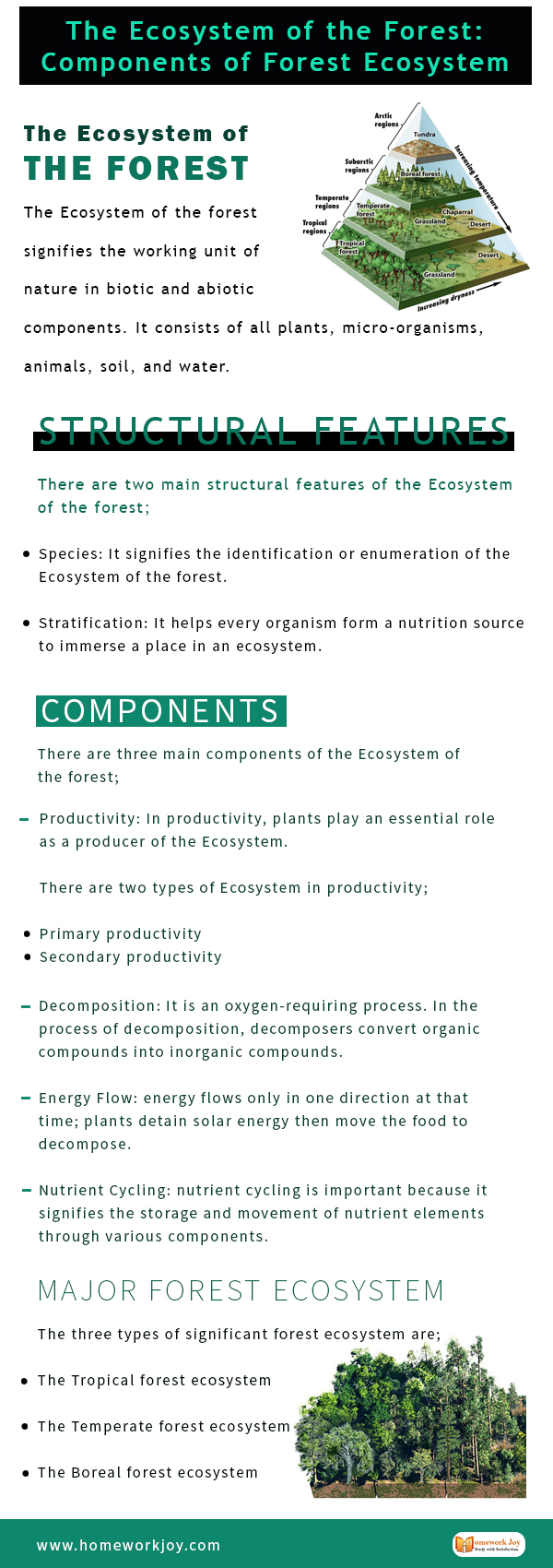The Ecosystem of the Forest is a scientific study of the associated patterns, flora and fauna, process, and Ecosystem in the forest. Forest management is also denoted as forestry and silviculture.
In the global system, the forest plays a vital role because forests produce approx. 28% of the Earth’s oxygen. Millions of people depend on forests because they provide a home for them. Also, many billions of people depend on forests in many other ways.
The Ecosystem of the forest teaches us how living organisms can survive and live. Forest is also used for economic purposes like making wood products and for fuel.
The Ecosystem of The Forest
The Ecosystem of the forest signifies the working unit of nature in biotic(living organism) and abiotic(non-living organism) components. It consists of all plants, micro-organisms, animals, soil, and water.
The Ecosystem’s numerous components are connected to each other like a food chain that depends on one another. In a food chain, basic requirements of life like air, energy, Carbon, nutrients, and water are essential to connect one thing to another.
Structural Features
There are two main structural features of the Ecosystem of the forest;
- Species: It signifies the identification or enumeration of the Ecosystem of the forest.
- Stratification: It helps every organism form a nutrition source to immerse a place in an ecosystem. Also, it mentions the vertical distribution of divergent species that inhabit different levels in the Ecosystem of the forest.
Every single organism has its own source of nutrition in the Ecosystem of the forest. Like in the Ecosystem of the forest, firstly come trees, then shrubs, then herbs, and the last is grass.
Components
There are three main components of the Ecosystem of the forest;
- Productivity: In productivity, plants play an essential role as a producer of the Ecosystem. Solar energy is most important to help plants play a vital role in productivity.
There are two types of Ecosystem in productivity;
- Primary productivity
- Secondary productivity
- Decomposition: It is an oxygen-requiring process. In the process of decomposition, decomposers convert organic compounds into inorganic compounds. Organic compounds have the dead plants that are leaves, flowers, the dead remains of animals, and the bark of trees that comes under the process of decomposition.
- Energy Flow: energy flows only in one direction at that time; plants detain solar energy then move the food to decompose. For food and energy relationships, organisms associate with one another that form a food chain.
- Nutrient Cycling: Nutrient cycling is crucial because it signifies the storage and movement of nutrient elements through various components.
There are two different types of Nutrient Cycling:
- Gaseous Cycle reserve nitrogen and Carbon
- Sedimentary Cycle Reserve phosphorus
Major Forest Ecosystem
The three types of significant forest ecosystems are;
- The Tropical forest ecosystem
- The Temperate forest ecosystem
- The Boreal forest ecosystem
For forest ecosystem assignment help, please visit our website Homework Joy.
